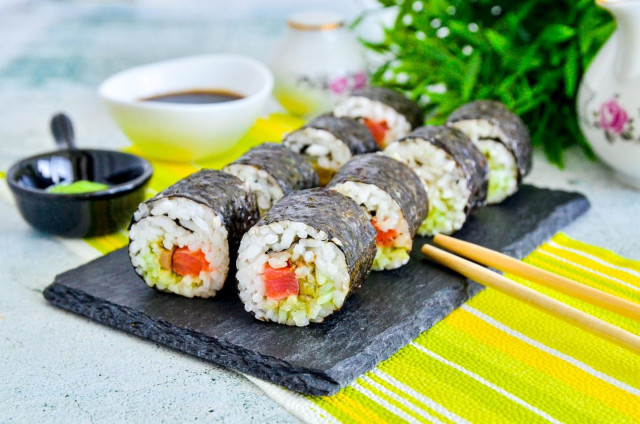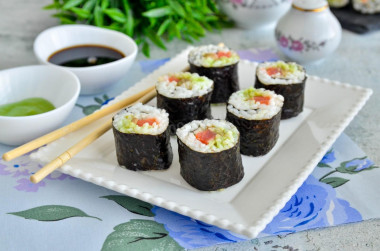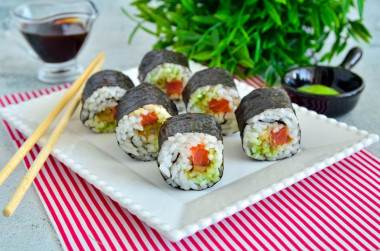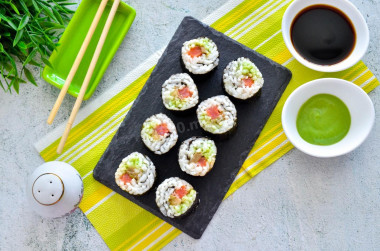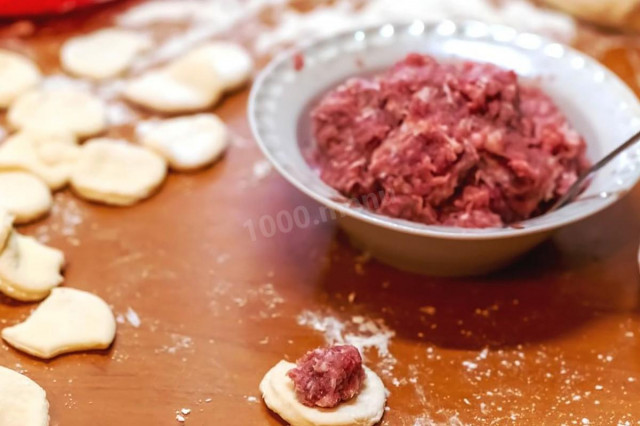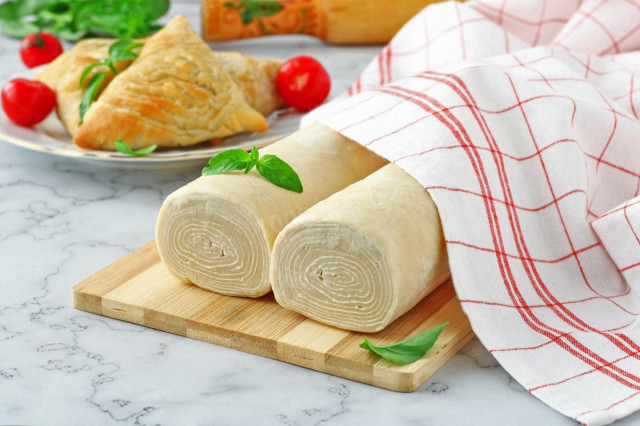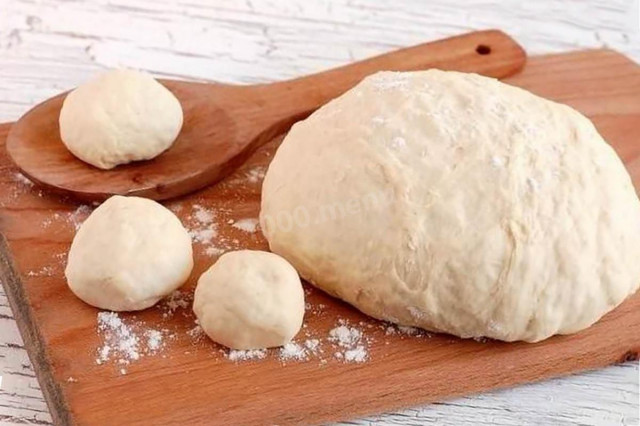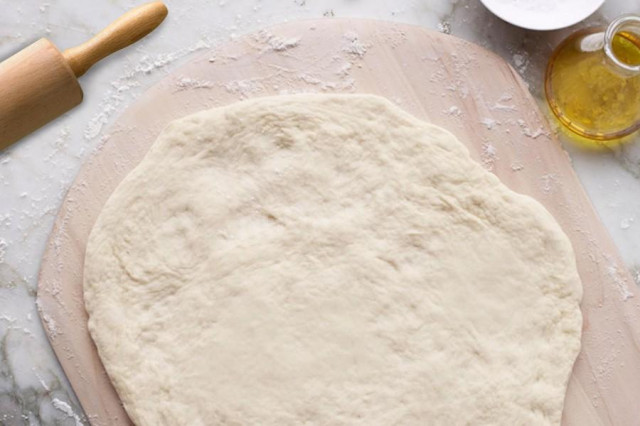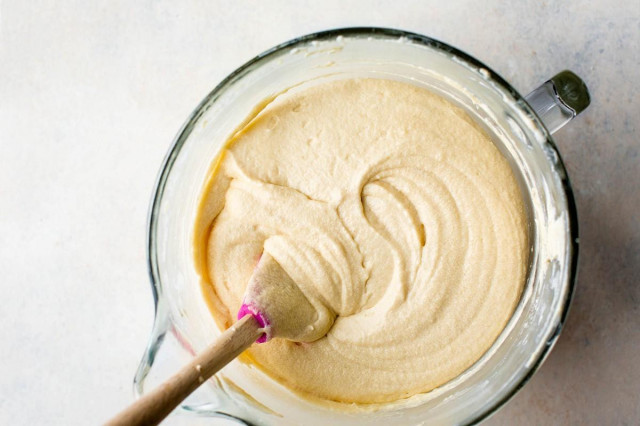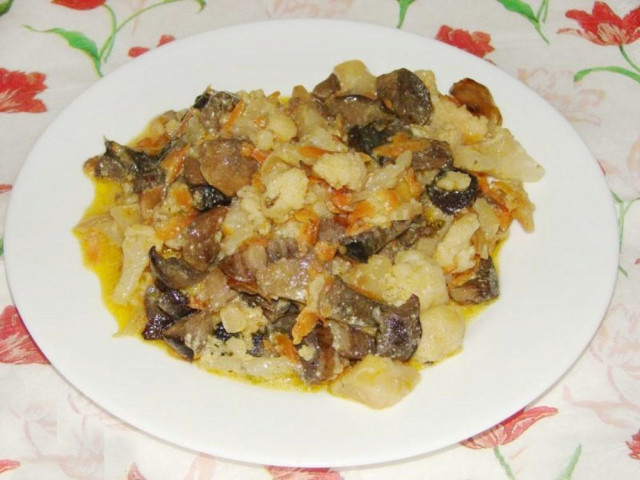Composition / ingredients
Step-by-step cooking
Step 1:
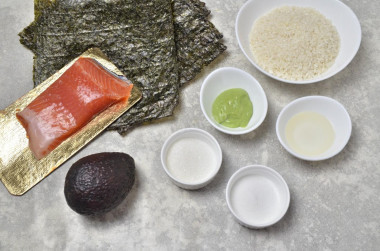
How to make avocado rolls? Prepare the products. Take special rice for sushi. If you do not find this, then use a regular round, not steamed. Instead of rice vinegar, you can take wine vinegar, white.
Step 2:
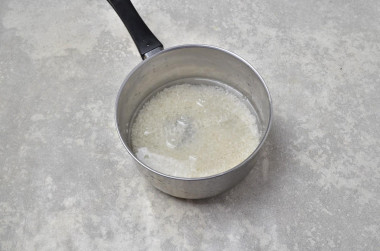
Start cooking by boiling rice. I advise you to measure it with a glass to make it easier to count the water. Pour the rice into a saucepan and rinse it very thoroughly until completely clear water. This method will help the rice not turn into porridge when cooking, as the starch will be washed out of it. Fill the washed cereal with clean cold water in a ratio of 1:1.5, and now a measuring glass will come in handy. I got a glass of rice, I filled it with 1.5 cups of water.
Step 3:

Cover the saucepan with a lid and put it to cook. After boiling, make the fire minimal. Cook the rice for 10-13 minutes, until the water boils completely. After that, remove the saucepan from the stove and leave it to stand with the lid closed for another 10 minutes — during this time, the remaining water will finally be absorbed.
Step 4:
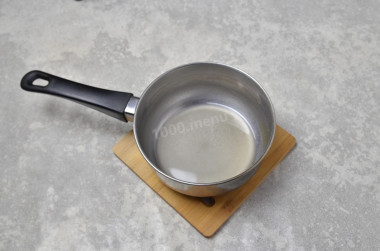
While the rice is settling, prepare the vinegar dressing. Pour salt, sugar, and vinegar into a small ladle. Heat everything together over low heat until hot. In this case, the salt and sugar crystals should dissolve.
Step 5:

Put the rice in a large bowl and pour hot vinegar over it. Turn the rice over a couple of times with a spatula, but do not mix so that it does not stick together. Leave the rice to cool.
Step 6:
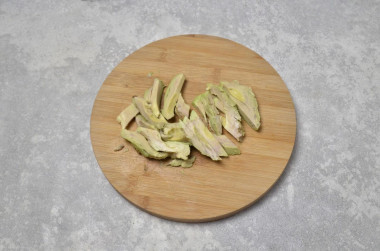
Prepare the filling. Cut the avocado in half, remove the stone, peel. Cut the pulp into long cubes.
Step 7:
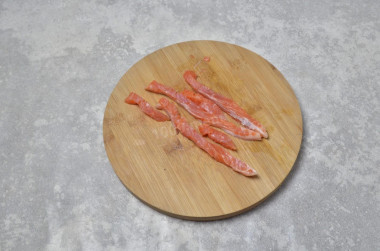
Also cut the fish into cubes the same size as the avocado. In addition to salmon, trout, chum salmon or pink salmon are suitable.
Step 8:
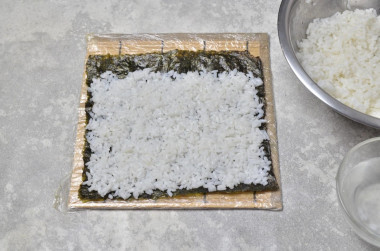
When the rice has cooled down to the point that it can be taken with your hands, start turning the rolls. To do this, you will need a bamboo mat. I use a straw napkin cut to the size of a nori leaf and wrapped in cling film. Lay the nori leaf on the mat with the shiny side down. With your hands soaked in cold water, lay out the rice in a thin layer, leaving one edge free, about 1.5 cm. Before each serving of rice, moisten your hands, then it will not stick.
Step 9:

Spread a thin strip of wasabi around the middle of the rice. I used horseradish with the addition of wasabi, not pure sauce, I smeared it more. Be careful with ordinary wasabi — it is very sharp.
Step 10:

Place the avocado and fish cubes on top. Moisten the free edge of the nori with water with your finger.
Step 11:
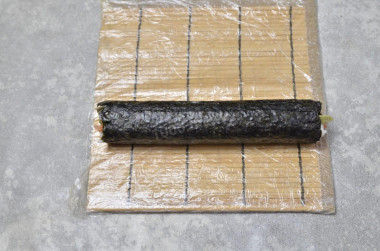
Using a bamboo mat, carefully wrap the layer in a tight tight roll.
Step 12:
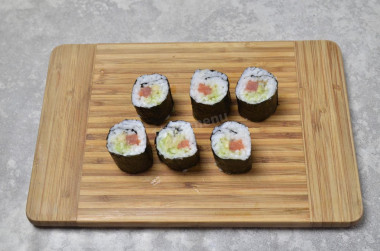
With a sharp knife dipped in water, cut the roll into 6 or 8 pieces. Similarly, twist two more rolls.
Step 13:
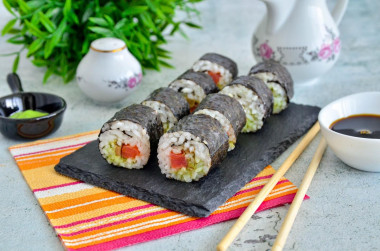
Serve the rolls with soy sauce and pickled ginger. Bon appetit!
Important! To make rice dishes invariably delicious, read the article about the subtleties of choosing rice and the secrets of its preparation .
Since the degree of salinity, sweetness, bitterness, sharpness, acid, burning is individual for everyone, always add spices, spices and seasonings, focusing on your taste! If you put some of the seasonings for the first time, then keep in mind that there are spices that it is especially important not to shift (for example, chili pepper).
For cooking, it is better to use filtered or bottled water that is neutral to taste. If you use tap water, keep in mind that it can give the dish an unpleasant characteristic taste.
Calorie content of the products possible in the composition of the dish
- Raw wild rice - 353 kcal/100g
- Brown raw rice - 360 kcal/100g
- Boiled brown rice - 119 kcal/100g
- White fortified raw rice - 363 kcal/100g
- Fortified boiled white rice - 109 kcal/100g
- White rice, steamed, with long grains raw - 369 kcal/100g
- Steamed white rice, boiled with long grains - 106 kcal/100g
- Instant dry rice - 374 kcal/100g
- Instant rice, ready to eat - 109 kcal/100g
- Fig - 344 kcal/100g
- Avocado - 208 kcal/100g
- Steamed salmon - 197 kcal/100g
- Boiled salmon - 189 kcal/100g
- Fresh salmon - 140 kcal/100g
- Granulated sugar - 398 kcal/100g
- Sugar - 398 kcal/100g
- Nori - 3 kcal/100g
- Wasabi - 143 kcal/100g
- Salt - 0 kcal/100g
- Rice vinegar - 20 kcal/100g

